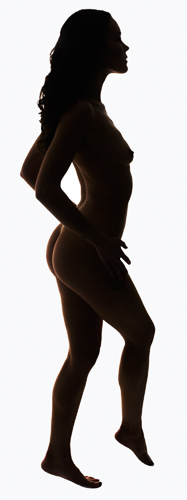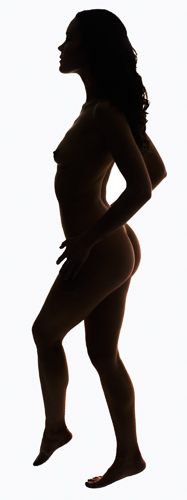
Scott Clifton Photography

Improving Your Photographs Of People
How to hide or improve the background
Some images have a background which is incidental to the main point of the photograph. In these circumstances the photographer will want to prevent the background from becoming a distraction.
An unobtrusive background can be difficult to find in a domestic environment! Light switches, and paintings on the wall etc etc can all make problems for the photographer!
However image processing software such as Adobe Photoshop can help here. Provided the intrusive element such as a wall light switch is completely surrounded by blank wall removing it is a trivial exercise. If the subject partially falls across the switch, removing it is very much more time-consuming! So the photographer taking the photo must ensure that any such elements aren’t partially obscured by the subject.
A second method of addressing a “noisy” background is the aperture used. A large aperture such as f/2.8 which will have a small depth of focus will cause the background to be blurred and therefore less noticeable. In my experience such blurring is likely to be modest. Moreover use of a large aperture will make it harder for the photographer to attain focus on the subject.
However, if you are working with flash it should be possible to set the shutter speed sufficiently fast at the chosen aperture for ambient light to be effectively excluded. If no light from the flash falls on the background then it will appear as completely black in the final image. To ensure that light from the flash does indeed not fall on the background the flash output can be directed sideways or down from overhead. For some shots this is not easy to do.
A more subtle alternative makes use of the “inverse square” law. This states that the illumination falling on a surface falls off by a factor of 4 for every doubling of the distance from the light source. Imagine that the light source is close to the subject at 20 centimetres and the background is four times as far away at 80 centimetres. Then the strength of the light falling on the background will be 1/4 x 1/4 = 1/16 of that on the subject. That’s enough to make the background pretty unobtrusive! Notice that the subject/light distance needs to be short to achieve this effect in a normal sized room.
In the above scenario if the subject was 40 centimetres from the light source the fall off in light intensity would be 1/4 not 1/16!
When using flash, the shutter speed normally must be less than the camera’s synch shutter speed. With a camera synch speed of 1/200 of a second using the flash at 1/500 of a second shutter speed will probably produce ugly black lines across your image. See this video for an explanation of flash synch speed.
An alternative to all this is to use a background kit. These are relatively inexpensive but can be quite heavy and take a while to set up. Compact and portable background kits are available. See this video at about 3 minutes into the video but do watch through until the end to find out how to pack this up again!.